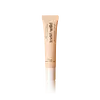What's inside
What's inside
 Key Ingredients
Key Ingredients

 Benefits
Benefits

 Concerns
Concerns

 Ingredients Side-by-side
Ingredients Side-by-side

Theobroma Cacao Seed Butter
EmollientRicinus Communis Seed Oil
MaskingHelianthus Annuus Seed Wax
Skin ConditioningEuphorbia Cerifera Wax
Butyrospermum Parkii Butter
Skin ConditioningIsoamyl Laurate
EmollientRosa Rubiginosa Seed Oil
EmollientAvena Sativa Kernel Oil
Skin ConditioningPrunus Amygdalus Dulcis Oil
Skin ConditioningCetearyl Alcohol
EmollientGlycerin
HumectantSqualane
EmollientRubus Idaeus Fruit Extract
AstringentAloe Barbadensis Leaf Extract
EmollientRubus Fruticosus Fruit Extract
AstringentFragaria Ananassa Fruit Extract
Skin ConditioningCocos Nucifera Oil
MaskingTocopheryl Acetate
AntioxidantSucrose
HumectantEthylhexylglycerin
Skin ConditioningPelargonium Graveolens Flower Oil
MaskingVanilla Planifolia Fruit Oil
EmollientRosa Damascena Flower Oil
MaskingTheobroma Cacao Seed Butter, Ricinus Communis Seed Oil, Helianthus Annuus Seed Wax, Euphorbia Cerifera Wax, Butyrospermum Parkii Butter, Isoamyl Laurate, Rosa Rubiginosa Seed Oil, Avena Sativa Kernel Oil, Prunus Amygdalus Dulcis Oil, Cetearyl Alcohol, Glycerin, Squalane, Rubus Idaeus Fruit Extract, Aloe Barbadensis Leaf Extract, Rubus Fruticosus Fruit Extract, Fragaria Ananassa Fruit Extract, Cocos Nucifera Oil, Tocopheryl Acetate, Sucrose, Ethylhexylglycerin, Pelargonium Graveolens Flower Oil, Vanilla Planifolia Fruit Oil, Rosa Damascena Flower Oil
Diisostearyl Malate
EmollientHydrogenated Polyisobutene
EmollientBis-Behenyl/Isostearyl/Phytosteryl Dimer Dilinoleyl Dimer Dilinoleate
EmollientPentaerythrityl Tetraethylhexanoate
EmollientMicrocrystalline Wax
Emulsion StabilisingSynthetic Fluorphlogopite
Dextrin Palmitate
EmulsifyingButyrospermum Parkii Butter
Skin ConditioningSilica Dimethyl Silylate
EmollientEthylene/Propylene/Styrene Copolymer
Synthetic Wax
AbrasiveEuphorbia Cerifera Wax
Squalane
EmollientPunica Granatum Seed Oil
EmollientHydrolyzed Hyaluronic Acid
HumectantCaprylic/Capric Triglyceride
MaskingTocopherol
AntioxidantButylene/Ethylene/Styrene Copolymer
Dehydroacetic Acid
PreservativeGlycine Soja Sterols
EmollientLinoleic Acid
CleansingPhospholipids
Skin ConditioningRosa Damascena Flower Oil
MaskingPentaerythrityl Tetra-Di-T-Butyl Hydroxyhydrocinnamate
AntioxidantWater
Skin ConditioningButylene Glycol
Humectant1,2-Hexanediol
Skin ConditioningNelumbium Speciosum Flower Extract
Skin ConditioningOligopeptide-1
Skin ConditioningGeraniol
PerfumingCitronellol
PerfumingDiisostearyl Malate, Hydrogenated Polyisobutene, Bis-Behenyl/Isostearyl/Phytosteryl Dimer Dilinoleyl Dimer Dilinoleate, Pentaerythrityl Tetraethylhexanoate, Microcrystalline Wax, Synthetic Fluorphlogopite, Dextrin Palmitate, Butyrospermum Parkii Butter, Silica Dimethyl Silylate, Ethylene/Propylene/Styrene Copolymer, Synthetic Wax, Euphorbia Cerifera Wax, Squalane, Punica Granatum Seed Oil, Hydrolyzed Hyaluronic Acid, Caprylic/Capric Triglyceride, Tocopherol, Butylene/Ethylene/Styrene Copolymer, Dehydroacetic Acid, Glycine Soja Sterols, Linoleic Acid, Phospholipids, Rosa Damascena Flower Oil, Pentaerythrityl Tetra-Di-T-Butyl Hydroxyhydrocinnamate, Water, Butylene Glycol, 1,2-Hexanediol, Nelumbium Speciosum Flower Extract, Oligopeptide-1, Geraniol, Citronellol
 Reviews
Reviews

Ingredients Explained
These ingredients are found in both products.
Ingredients higher up in an ingredient list are typically present in a larger amount.
This ingredient is also known as shea butter. It is an effective skin hydrator and emollient.
Emollients help soothe and soften your skin. It does this by creating a protective film on your skin. This barrier helps trap moisture and keeps your skin hydrated. Emollients may be effective at treating dry or itchy skin.
Shea butter is rich in antioxidants. Antioxidants help fight free-radicals, or molecules that may harm the body. It is also full of fatty acids including stearic acid and linoleic acid. These acids help replenish the skin and keep skin moisturized.
While Shea Butter has an SPF rating of about 3-4, it is not a sunscreen replacement.
Shea butter may not be fungal acne safe. We recommend speaking with a professional if you have any concerns.
Learn more about Butyrospermum Parkii ButterRosa Damascena Flower Oil is an essential oil made from the Damask Rose. It is often used as a fragrance in cosmetics.
Rose Oil has antibacterial and antioxidant properties due to its terpene, glycoside, flavonoid, anthocyanin, and Vitamin C content.
Other major parts of Rose Oil include citronellol and geraniol. Both of these are known EU allergens and cause contact-allergies.
The downsides of this ingredient outweight the positives.
Learn more about Rosa Damascena Flower OilSqualane is an emollient that helps the skin hold onto moisture. It's an oily liquid that occurs naturally in certain types of fish and plant oils.
Because squalane boosts hydration in the skin, it also comes with plenty of benefits: it is an antioxidant and can help fight free radicals and skin damage. Squalane is also found to have a detoxifying effect when applied.
Squalane comes from squalene, which occurs naturally within the sebum of our skin. It is one of the oils our skin produces to keep itself hydrated. Squalane is the hydrogenated version of squalene and has a longer shelf life.
Research shows that squalane is non-irritating (even at 100% concentration).
In general, it's a fantastic ingredient. It does a great job at hydrating the skin, and it's suitable for those with sensitive skin.
The source of squalane may impact malassezia / fungal acne. This is because olive oil derived squalane can contain impurities such as fatty acids and plant waxes. Sugarcane derived squalane is recommended for anyone with malassezia concerns.
Is squalane vegan?
This depends on the source. Squalane can be derived from both plants and animals. Most squalane used in skincare comes from plants.
Please note: the source of squalane is only known if disclosed by the brand. We recommend reaching out to the brand if you have any questions about their squalane.
Read more about squalene with an "e".
Is squalane an oil?
Squalane is often called an oil, but it’s technically not; it’s a hydrocarbon, meaning it’s only made of carbon and hydrogen, unlike true oils which are triglycerides made of fatty acids and glycerol.
The term “oil-free” isn’t regulated, so companies can define it however they want. Some exclude all oils, while others just avoid mineral oil or comedogenic oils.
While some people avoid oils thinking they cause breakouts, the right kind of oil (or oil-like ingredient like squalane) can actually help balance and hydrate your skin. It’s worth testing out simple oils or squalane to see what works best for your skin.
Learn more about SqualaneEuphorbia Cerifera wax comes from a shrub in Northern Mexico. It is used to stabilize formulations and has emollient properties.
Emollients form a thin layer on top of skin to prevent water from evaporating, keeping skin and lips hydrated.
According to a manufacturer, this wax can range from a yellow/brown color to translucent.
Learn more about Euphorbia Cerifera Wax